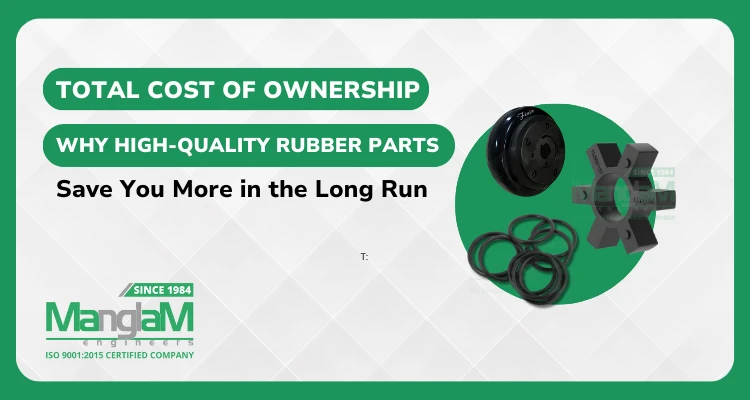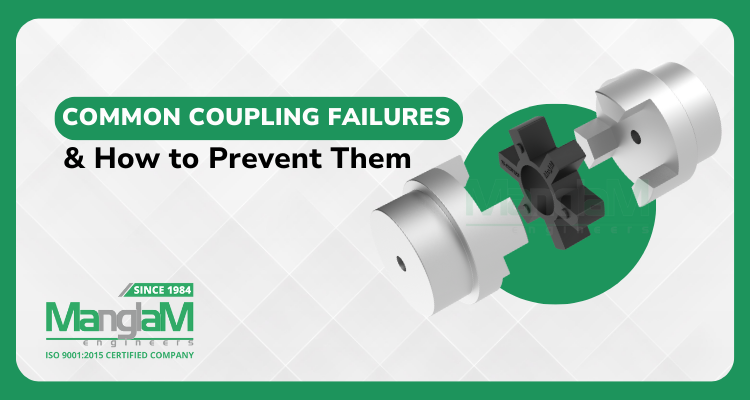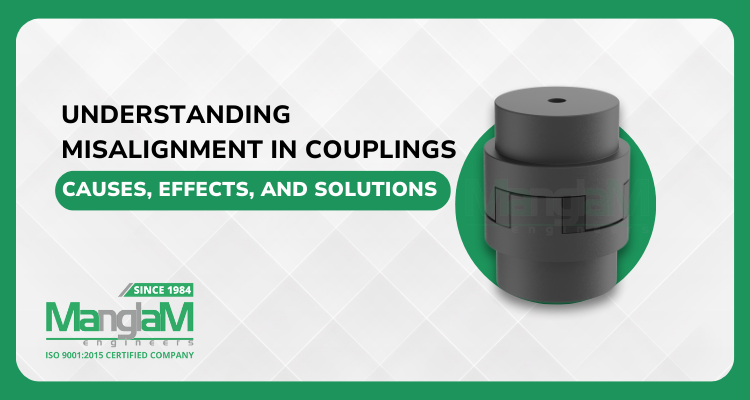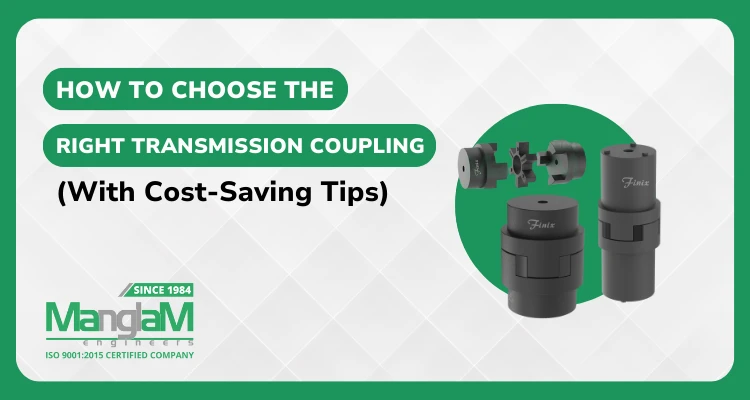
How to Choose the Right Transmission Coupling (With Cost-Saving Tips)
October 14, 2025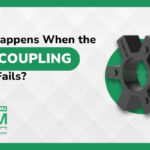
What Happens When the Jaw Coupling Spider Fails
November 3, 2025Introduction
Are you an OEM or EPC contractor accurately calculating the cost per unit of every material that goes into your machinery? If so, you’re already a smart buyer. But are you falling into the classic trap of prioritizing low initial price over Total Cost of Ownership (TCO)?
For mission-critical mechanical power transmission systems, especially those using flexible components like jaw, tyre, or HRC couplings, the rubber elements are the silent heroes—or the hidden loggers. A seemingly small saving on industrial rubber components can quickly translate into major losses down the line.
At Manglam Engineers, we understand that our global industrial buyers are seeking not just a component, but a reliable, cost-effective manufacturing solution. This guide breaks down exactly why investing in high-quality rubber parts is the single best decision you can make for your balance sheet and your operational reliability.
What is the Total Cost of Ownership (TCO) for Industrial Rubber Components?
Why Should Industrial Buyers Focus on TCO, Not Just Purchase Price?
Total Cost of Ownership (TCO) is the holistic calculation of all direct and indirect expenses associated with an asset or component over its entire lifecycle. For OEM rubber parts, TCO moves beyond the sticker price to include costs like installation, maintenance, repair, energy consumption, and crucially, lost revenue from unexpected downtime.
Focusing on TCO is essential because a component's price often accounts for less than 20% of its overall lifecycle cost. The true cost comes in the operational expenses it generates—or, in the case of high-quality materials, the expenses it prevents.
What Hidden Costs Do Cheap Rubber Parts Introduce?
Cheap, poor-quality rubber components introduce a series of growing hidden costs that quickly erase any initial savings. These issues stem from inferior formulations and poor manufacturing tolerances.
- Frequent Replacements: They suffer rapid degradation, demanding repeat purchases and inventory stocking.
- Performance Under Extreme Conditions: They quickly fail when exposed to heat, oil, chemicals, or extreme torque, leading to premature wear on coupled components like shafts.
- Increased Maintenance Labor: More frequent component change-outs require excessive labor hours from highly paid technicians.
- Excessive Energy Consumption: Worn or mismatched rubber elements in couplings (like in a Rotex Type Coupling or Normex Type Coupling) can create unnecessary drag or slippage, waste power and reduce energy efficiency in machinery.
The Core Value Proposition: Rubber Component Lifespan and Durability
How Do Durable Rubber Materials Reduce Maintenance Cost Reduction?
Durable rubber materials dramatically reduce ongoing expenses by extending the rubber component lifespan and improving system longevity. Quality materials are engineered, not just molded.
- Superior Material Compound: High-quality rubber is specifically compounded (e.g., NBR, EPDM, Polyurethane) to resist the operating environment (temperature, chemical exposure). This ensures long-lasting performance, such as in the heavy-duty buffers found in RRL and RRS Couplings.
- Minimized Wear and Tear: Precisely manufactured rubber inserts in components like the Jaw Coupling or Pin Bush Type Coupling absorb shock and vibration better, protecting the metal hubs and surrounding machinery. This is a direct path to maintenance cost reduction.
- Controlled Replacement Cycles: Components with a reliable rubber product reliability rating allow maintenance teams to move from a reactive "fix-it-when-it-breaks" model to a planned, preventive maintenance schedule, drastically preventing downtime in production.
Quality vs. Cheap Rubber Components: A Comparison of ROI
The return on investment (ROI on industrial materials) becomes immediately clear when comparing performance and lifecycle cost.
| Feature | Cheap Rubber Components | High-Quality Industrial Rubber Components |
|---|---|---|
| Material Base | General-purpose SBR or low-grade compounds | Custom-engineered NBR, EPDM, Polyurethane |
| Tolerance | Wide, inconsistent fit | Precision-fit for zero backlash, maximizing manufacturing efficiency |
| Shock Absorption | Quick to harden, leading to failure | Maintains elasticity and dampening properties over time |
| Typical Failure | Catastrophic and sudden | Gradual, giving time for planned replacement |
| Application Suitability | Generic use only | Optimized for specific applications (e.g., oil-resistant for hydraulic pumps) |
Operational Benefits: Performance, Efficiency, and Reliability
How Does Component Quality Affect Industrial Equipment Performance?
The quality of a coupling’s elastic element is directly related to overall industrial equipment performance. A worn element in any power transmission system introduces backlash, vibration, and misalignment—all of which steal power and shorten the life of expensive connected equipment.
For example, the durable rubber tyre in a Tyre Coupling is designed to absorb significant misalignment without wearing it. If the rubber quality is poor, the flexibility is lost quickly, placing extreme stress on bearings and seals, ultimately leading to expensive major repairs. This is why Long-term value of rubber parts is strongly tied to the material's integrity.
What is the Link Between Rubber Part Reliability and Manufacturing Efficiency?
Reliable OEM rubber parts are foundational to sustained manufacturing efficiency. When components like the rubber block in an MT Coupling or the elastomeric spider in a GR Coupling perform as expected, the entire production line runs smoother.
- Minimized Power Loss: Properly fitted; quality rubber components ensure maximum torque transmission and minimal slippage.
- Vibration Control: Superior dampening protects sensitive electronics and machine structures, extending the operational life of the entire system.
- Consistency: Predictable performance underload allows for tighter process control and consistent product quality.
The Manglam Engineers Solution: Quality and Engineering
Why Do Manglam Engineers High-Quality Rubber Parts Offer Superior TCO?
At Manglam Engineers, our focus is on delivering true TCO savings through superior material science and engineering. We don't just sell components; we provide engineered solutions optimized for performance under extreme conditions.
Our approach is built on three pillars:
- Certified Materials: We use only scientifically tested, high-grade polymers to ensure maximum resistance to fatigue, heat, and chemicals.
- Precision Manufacturing: Components like the elements for HRC Type Coupling and Chain Coupling are manufactured to extremely tight tolerances, guaranteeing a perfect fit and optimum torque transfer.
- Engineering Support: Our team provides consultation services to help you select the exact compound and component design (e.g., selecting the right material for rubber seals and gaskets) that will maximize ROI in your specific application.
Conclusion
The debate between quality vs. cheap rubber components is no contest when analyzed through the lens of Total Cost of Ownership. Every dollar saved on the initial purchase price of a low-quality industrial rubber part is often lost ten-fold in premature failures, lost production, excessive labor, and damage to surrounding components.
For OEMs, infrastructure leaders, and industrial buyers worldwide, the choice is clear: true savings are found in reliability. By partnering with a precision-engineering firm like Manglam Engineers, you secure the highest quality, most durable industrial rubber components on the market, ensuring maximum long-term value and a truly cost-effective manufacturing solution.
Don't compromise on performance or long-term value. Explore our full range of high-quality power transmission couplings and components today.

